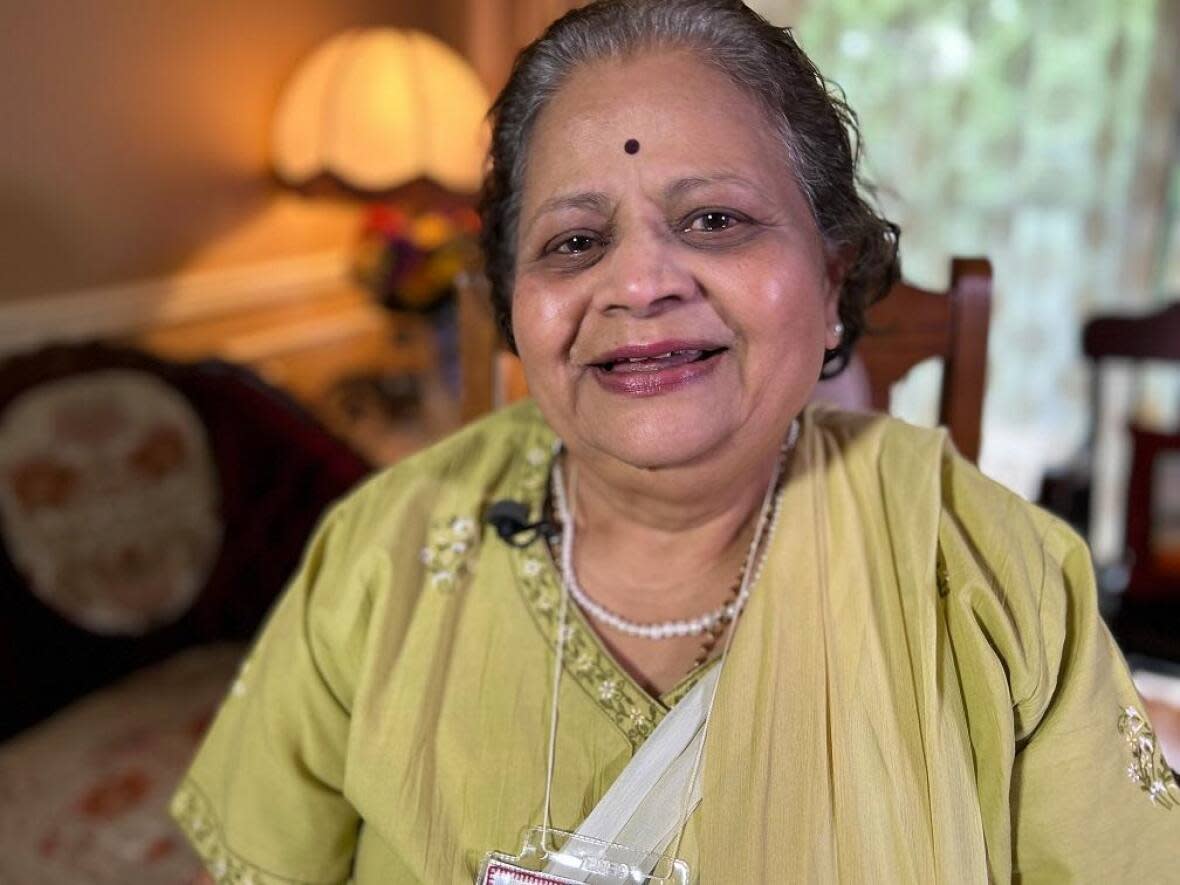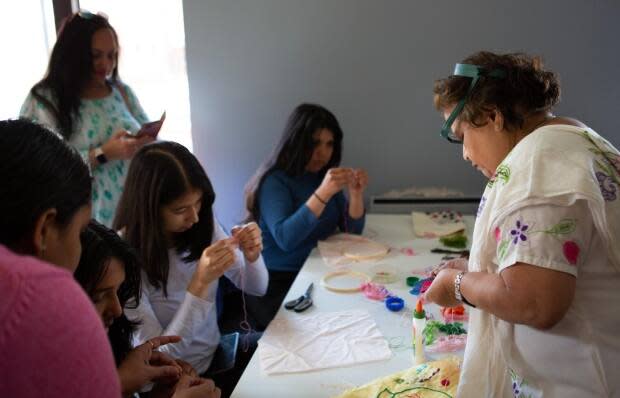Meet an embroiderer who is passing on an ancient Indian tradition to her Canadian neighbours


Drawing upon the rich embroidery heritage of her childhood in Mumbai, Sarita Gujar combines traditional Indian craftsmanship with western embroidery techniques — and is sharing her skills with other embroiderers in Fredericton.
Gujar's expertise is in shisha embroidery, also known as mirror work. This ancient technique was originally the domain of poor artisans who mimicked the bejewelled fashions of the wealthy.
In time, mirror work has become admired in its own right.
"It's a different type of culture which we don't see here much. I want to pass [it] on to Canadians," Gujar says.
Born and raised in the Indian state of Maharashtra, renowned for its artistic traditions, Gujar as a young bride left her home for Fredericton 58 years ago.
When she arrived, she took courses at the University of New Brunswick, where she received a diploma in business administration.
After she raised her children, she became interested in shisha embroidery. In 1993, she joined a group of women in Fredericton who came together weekly to make embroidery.
She learned Western embroidery techniques — and shared her skills in mirror work.
"Traditional Indian embroidery is passed on from one generation to another," she said.
WATCH | Stitch by stitch, Sarita Gujar is preserving her Indian culture in Fredericton:
Gujar plays a significant role in Fredericton's multicultural and Indo-Canadian community. She is one of the founders of the temple in Fredericton, and also worked as a social worker for various organizations.
Her embroidery has been displayed at Government House, and she has travelled around New Brunswick to showcase her custom-embroidered cloths and artwork.
The art of mirror embroidery
Shisha or mirror work embroidery originated in the 17th century in India. The process involves attaching small pieces of mirror to fabric to create a reflecting, beautiful pattern.
A traditional South Asian embroidery, mirror work today is popular in many part of the world.

"One can recognize its tradition, religion, by looking at the embroidered piece, the colour, the stitches, the designs," Gujar said.
In its early history, shisha involved decorating fabric with silver beetles' wings and chips of mica, made from silicate minerals.
"They used to use mica, a coloured powder. Later on they found out this technique is not good for health," she said. "And so that's how somehow they incorporated into mirror."
A distinguishing aspect of Gujar's work is her ability to infuse traditional mirror work techniques with contemporary designs.
She draws inspiration from nature and from her own life experiences.
She said she combines intricate Canadian thread work with shisha mirrors to create stunning pieces bridging the gap between both cultures.
Introducing Asian heritage
The Asian Heritage Society of New Brunswick recently organized a mirror embroidery workshop in Fredericton to celebrate Asian heritage month.
The workshop was open to everyone in Fredericton.
Participants had the opportunity to learn about the history and techniques of mirror embroidery. They were introduced to different stitching techniques, patterns and materials.
Gujar helped walk the participants through the process, demonstrating how to create beautiful designs on fabrics using the mirror embroidery technique.

Madhu Verma, the founder of the Asian Heritage Society of New Brunswick, who still possesses a 100-year-old embroidery piece passed on to her from her mother, says cultural workshops like these are a way of sharing Asian culture with the people of Fredericton.
"That's how we introduce our cultural activity," she said. "We are passing on our culture to our children, too."
Verma said the cultural activity showcased in this year's Asian Heritage Month is vital in helping newcomers settle in when they arrive in New Brunswick.
"We approach all the Asians who are here," she said. "Somewhere, they could come and see their own culture and make new friends."

She also hopes some Asian cultural activities can become part of the school curriculum to foster cultural education and awareness.
"Now in the school, sometimes you will see 30 per cent or 40 per cent [of the students are] the new immigrants' children," she said.
"The teacher can talk a little bit about it, how their grandparents or how they have contributed to building this nation."
Gujar, meanwhile, said she was pleased with the results she saw.
"I was surprised by people who participated that they learned in a short time those techniques," Gujar said.


